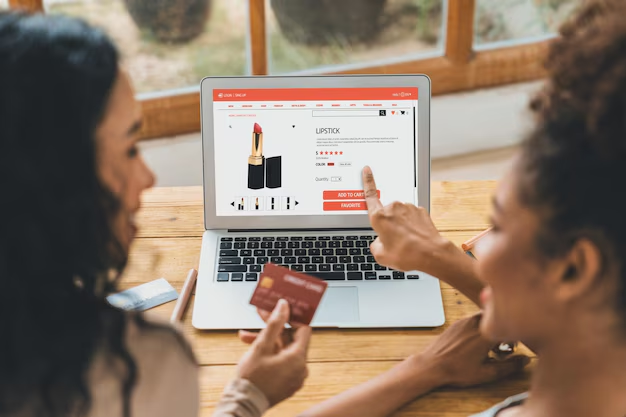Ever wondered how advertisers always seem to know what you’ll love? The secret lies in ruthless product testing.

In the fast-paced world of online advertising, launching a product without testing is like jumping blindfolded into a storm. The stakes are high: a misstep can mean wasted budgets, damaged brand reputation, and missed opportunities. But when done right, product testing transforms guesswork into precision, ensuring campaigns resonate with audiences and drive explosive growth.
So, how do the pros do it? From leveraging influencers as secret weapons to harnessing the power of data analytics, this deep dive uncovers the cutting-edge strategies advertisers use to test products before they hit the market. By the end, you’ll not only understand these methods—you’ll see why they’re non-negotiable for success.
Before a single ad is designed, advertisers invest heavily in understanding what makes consumers tick. Product testing isn’t just a phase; it’s the foundation of every successful campaign. It answers critical questions:
Will the product solve a real problem?
How do consumers react to its features?
What messaging will trigger a purchase?
Without these insights, even the flashiest ads fall flat. Here’s how advertisers crack the code.
Surveys are the Swiss Army knife of product testing—quick, scalable, and packed with insights. Platforms like SurveyMonkey or Typeform let advertisers gather feedback from thousands of potential customers in hours.
Why it works:
Broad reach: Surveys can target diverse demographics, ensuring no segment is overlooked.
Quantifiable data: Responses are easy to analyze, revealing trends like price sensitivity or feature preferences.
Low cost: Compared to focus groups, surveys are budget-friendly and efficient.
Pro tip: The best surveys are short, specific, and incentivized (e.g., “Complete this 2-minute survey for a chance to win $50!”).
While surveys provide breadth, focus groups deliver depth. Imagine a room (or Zoom call) where 10-12 target consumers interact with a product while advertisers watch their every reaction.
Why it works:
Real-time reactions: Body language, tone, and group dynamics reveal unspoken opinions.
Nuanced feedback: Open-ended discussions uncover pain points surveys might miss.
Iterative testing: Brands can tweak products on the spot and retest.
Case study: A skincare brand noticed focus group participants consistently struggled with a pump design. They redesigned it pre-launch, avoiding a wave of negative reviews.
Influencers aren’t just megaphones for brands—they’re elite product testers. By sending prototypes to micro- and macro-influencers, advertisers get brutally honest feedback from trusted voices.
Why it works:
Authentic reviews: Followers trust influencers’ opinions, making their feedback gold.
Engagement metrics: Comments and shares reveal what excites (or bores) audiences.
Niche targeting: A gaming influencer’s audience will critique a product differently than a mommy blogger’s.
Red flag alert: If an influencer’s followers call out flaws (“This battery life is terrible!”), advertisers know to fix them fast.
Gut feelings don’t cut it in advertising. Data analytics tools like Google Trends, heatmaps, and CRM systems uncover what consumers want—before they even say it.
Key tactics:
Trend spotting: Rising search terms for “sustainable sneakers” signal a market shift.
Behavior analysis: If 80% of visitors abandon a product page at the price section, it’s too high.
Competitor benchmarking: Why is a rival’s product outselling yours? Data holds the answer.
Example: A fashion retailer noticed a spike in searches for “oversized blazers” and prioritized testing them in ads. Result? A 200% sales boost.
A/B testing is the advertising equivalent of a science experiment. Create two versions of a product (or ad), show each to a similar audience, and let performance decide the winner.
What to test:
Product features: Version A has wireless charging; Version B doesn’t. Which sells more?
Ad creatives: Does a “50% off” headline outperform “Limited edition”?
Pricing: Is $99 more appealing than $97? (Spoiler: Often, yes.)
Golden rule: Test one variable at a time to isolate what’s driving results.
Product testing doesn’t end at launch. Savvy advertisers treat every customer interaction as a testing opportunity.
Post-launch strategies:
Reviews monitoring: A flood of “too heavy” complaints? Lighten the next batch.
Social listening: Tools like Brandwatch track real-time sentiment.
Loyalty programs: Reward customers for feedback (“Tell us what you think—get 10% off!”).
Brand loyalty hack: When customers see their feedback implemented (“We heard you! New improved version out now!”), they become lifelong fans.
In online advertising, product testing isn’t optional—it’s survival. Brands that skip it gamble with their budgets and reputations. Those that embrace it build trust, loyalty, and unstoppable momentum.
The next time you see a flawless ad campaign, remember: Behind the scenes, armies of consumers, influencers, and data scientists made it bulletproof before it ever reached you.
Now, over to you: Which testing method surprised you most? Could your brand benefit from a testing overhaul? Share your thoughts in the comments!